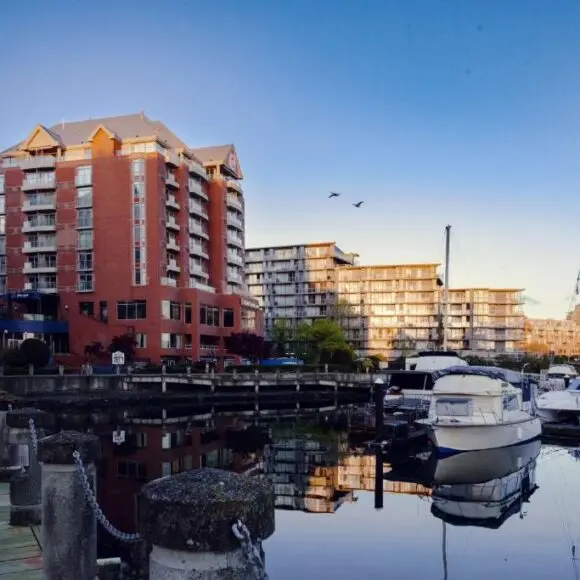Hotel Ramada Plaza&Conference Centre

Ramada Plaza&Conference Centre
Hotel Ramada Plaza&Conference Centre reviews
Looking for a great place to stay in Abbotsford? Book Ramada Plaza&Conference Centre; rated and is available from CAD $ 122. Ramada Plaza&Conference Centre is conveniently located near ferry terminals, and can be booked directly with Trivago.
📍 Address Ramada Plaza&Conference Centre
n parallel rd,36035, N, Abbotsford, Canada
FAQ
How do I make a reservation for the ferry Vancouver from Powell River (Little River) to Comox (Westview)?
Making a reservation for the Vancouver Ferry from Powell River (Little River) to Comox (Westview) is essential, particularly during peak travel seasons. Reservations can be made online or by phone. To secure your spot, it is best to check the Powell River to Comox ferry reservation page. Online bookings are recommended for their ease of use and real-time availability updates.
How do I get real-time updates for the ferry Vancouver sailings from Quadra Island (Heriot Bay) to Cortes Island (Whaletown)?
To receive real-time updates for the ferry Vancouver sailings from Quadra Island (Heriot Bay) to Cortes Island (Whaletown), it is best to check the Heriot Bay to Whaletown ferry updates page. This resource provides the latest information on sailing schedules, potential delays, and any other relevant updates, ensuring you are always informed.
Where can I find information on the ferry Vancouver sailing from Earls Cove to Saltery Bay?
Information regarding the Vancouver Ferry sailing from Earls Cove to Saltery Bay, including schedules, fares, and terminal details, can be found on the Earls Cove to Saltery Bay ferry information page. This route is a vital link between the Sunshine Coast communities and provides essential transportation services.
Ferry Vancouver
Cargo and freight services operate alongside passenger ferries, supporting Vancouver Island’s economy and supply chains. Commercial vehicles transport everything from fresh produce to building materials. This integrated transportation system maintains Vancouver Island’s connection to mainland markets and services.
Wildlife viewing opportunities during ferry crossings include orcas, seals, dolphins, and diverse seabird species throughout the Salish Sea. The best viewing occurs from outdoor decks, and crew members often announce wildlife sightings over the ship’s public address system. Binoculars enhance the wildlife watching experience during these scenic journeys.
Accessibility features ensure all passengers can enjoy ferry travel, with elevators, wheelchair-accessible restrooms, and designated seating areas. Vehicles with accessibility equipment receive priority boarding assistance. Ferry staff provide support for passengers with mobility challenges throughout the journey.
Weather considerations can occasionally affect ferry schedules, particularly during severe winter storms or high winds. Safety remains the top priority, with sailings potentially delayed or cancelled during dangerous conditions. Passengers should monitor weather forecasts and sailing status before traveling, especially during winter months.
Fuel and vehicle services are available at some ferry terminals, allowing travelers to prepare for their Vancouver Island adventure. Terminal locations often feature gas stations, convenience stores, and automotive services. Pre-trip vehicle inspections ensure safe travel on Vancouver Island’s diverse road conditions.
Emergency procedures and safety protocols ensure passenger security throughout ferry crossings. Modern vessels feature comprehensive safety equipment and trained crew members. Regular safety drills and equipment inspections maintain the highest safety standards for all passengers and vehicles.
Seasonal variations significantly affect ferry operations, with summer bringing increased frequency and capacity to handle peak tourist demand. Winter schedules may have reduced sailings, while spring and fall offer moderate crowds with pleasant weather. Holiday periods require advance planning due to extremely high demand for popular routes.
Island hopping opportunities exist for adventurous travelers wanting to explore the Gulf Islands during their ferry journey. Some routes provide connections to smaller islands like Salt Spring, Pender, and Galiano Islands. These stops offer unique communities, local artisans, and pristine natural environments.
Tourist information centers at major ferry terminals provide maps, brochures, and local expertise for Vancouver Island travel planning. Knowledgeable staff offer recommendations for accommodations, attractions, and activities. These resources help first-time visitors maximize their Vancouver Island experience.
Ferry services to Vancouver Island provide the essential connection between mainland British Columbia and one of Canada’s most beautiful destinations. BC Ferries operates multiple routes linking the mainland to various ports on Vancouver Island, offering travelers spectacular scenic journeys across the Salish Sea. These ferry crossings are not just transportation but memorable experiences showcasing the stunning Pacific Northwest coastline.
Connecting transportation from ferry terminals includes public transit, rental cars, taxis, and ride-sharing services. Victoria’s Swartz Bay terminal connects to downtown Victoria via public bus service. Nanaimo terminals provide access to Island-wide transportation networks for exploring Vancouver Island’s diverse attractions and natural areas.




